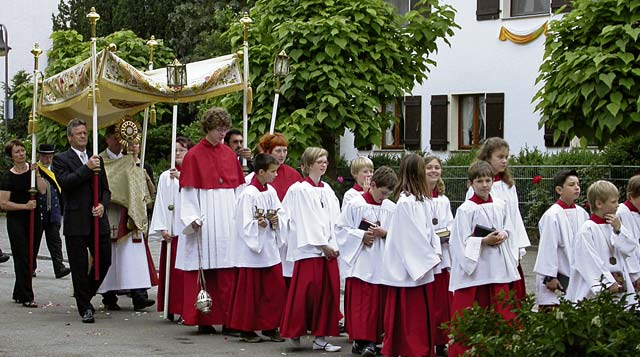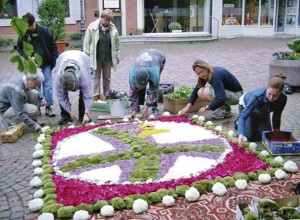
Solemn processions proceed through many towns and villages in the KMC on Corpus Christi Day.
Thursday is a religious holiday in Germany, called “Fronleichnam,” or Corpus Christi Day.
Roman-Catholics in Germany and Europe celebrate the church fest, which is observed 10 days after Pentecost. In some, but not all, German states, Fronleichnam is an official holiday. Stores, banks and official institutions are closed in Rheinland-Pfalz, Saarland, Baden-Württemberg, Hessen, Bayern, in some communities in Sachsen and Thüringen, and in areas with a mainly Catholic population.

carpets for the Corpus Christi Day celebrations.
The word Fronleichnam derives from old German and corresponds to the Latin word “Corpus Domini,” or body of the Lord.
In 1264, Pope Urban IV ordered the entire Catholic church to observe the feast of Corpus Christi.The fest commemorates Christ’s Last Supper the day before he died. It honors the real presence of Christ in the Eucharist.
Today, the church holiday is a colorful event featuring solemn processions through the streets, which are decorated with flowers, little birch trees and church banners. Four altars are set up on the procession route to symbolize the four stops of Christ’s way to the cross, known as the “Stations of the Cross.”
A priest leads the procession and carries the Holy of Holies under a baldachin. Then the ministrants, communion children of that year and worshippers follow. At the altars, the procession stops and participants say a prayer.
The procession is accompanied by singing and usually ends at a church or a public place, where an open-air worship service is conducted.


